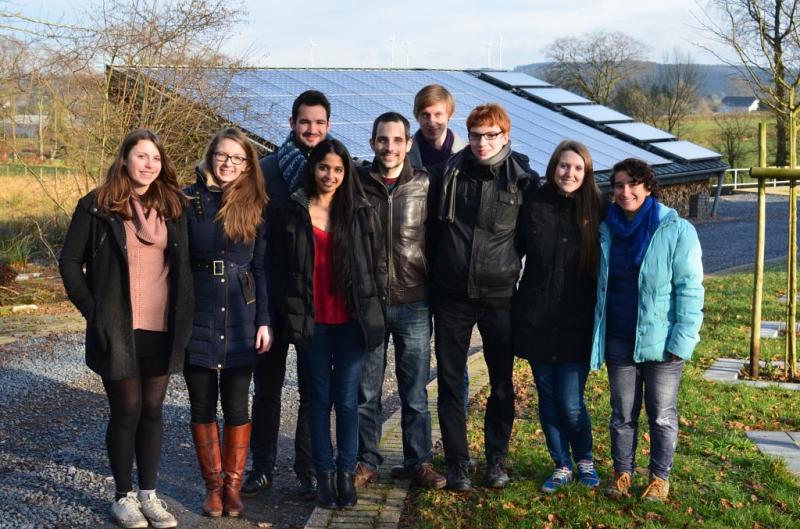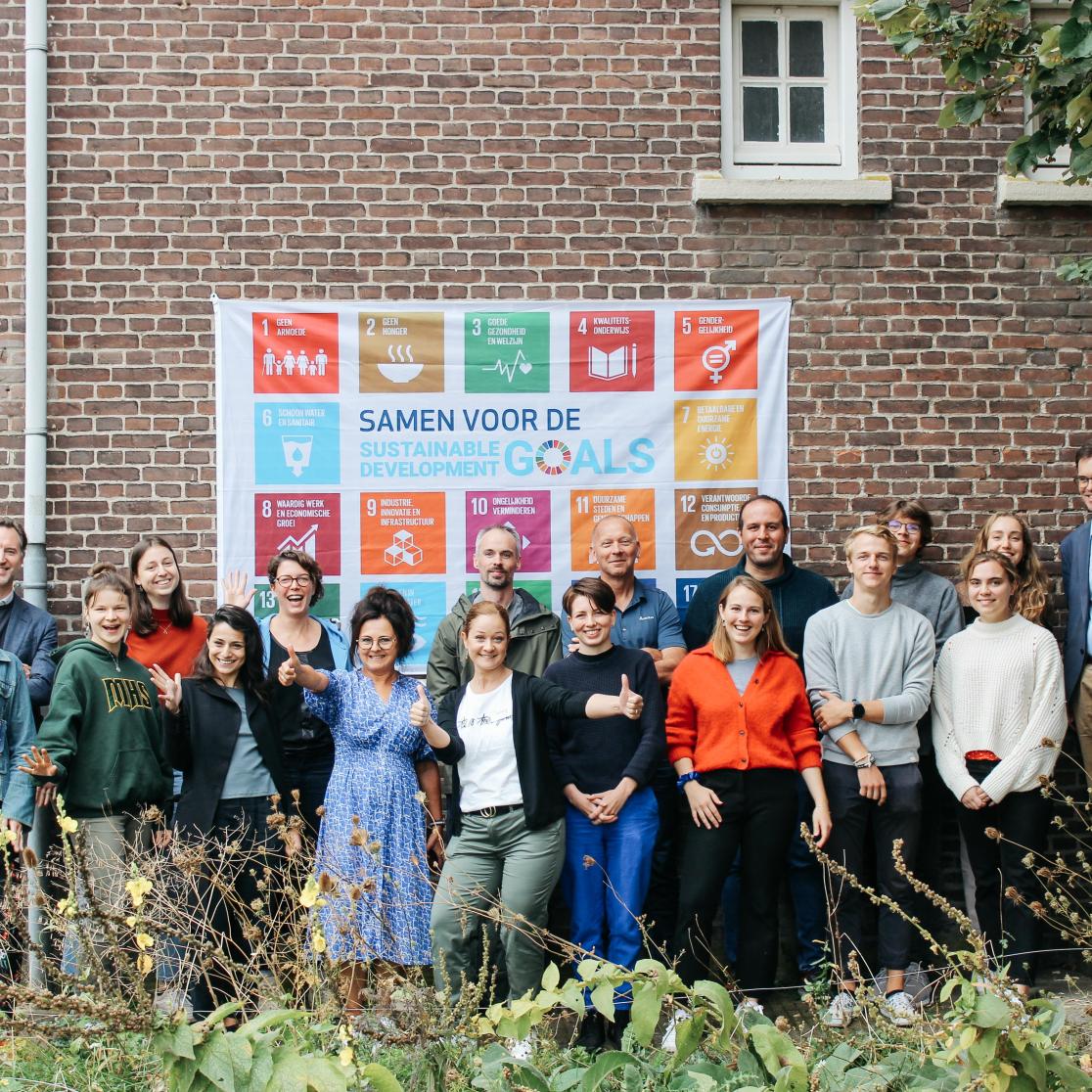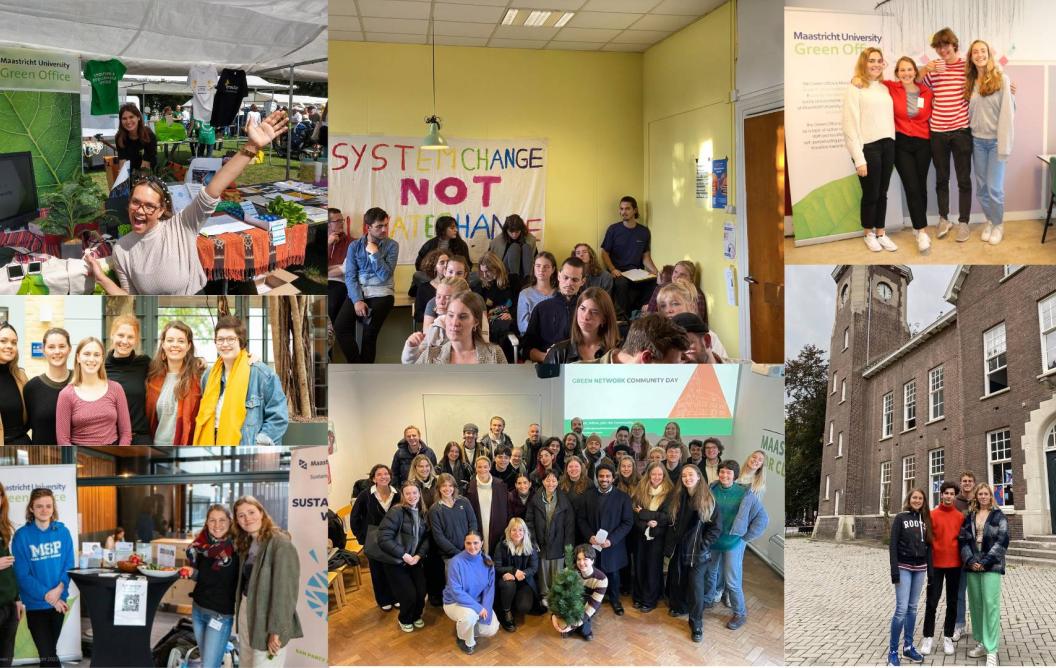The UM Green Office: Global Pioneer & Evolving UM Sustainability Catalyst
The Maastricht University Green Office was the first one in the world and the movement spread out with now 101 Green Offices world wide. In this article, the UM Green Office reflects on how far it has come since its founding in 2010 and what it strives to accomplish in the future. With the recent launch of the UM Green Network framework, students and staff now have more opportunities than ever before to engage with impactful sustainability initiatives.
The World’s First Green Office
At a kitchen table in mid-2009, a group of Maastricht University students met to brainstorm a new approach to sustainability. After a year of drafting vision documents, pitching with staff, and ultimately negotiating with the executive board, the Maastricht University Green Office officially opened in September 2010 with the intent to bring together institutional resources and innovative student ideas. We communicated with Felix Spira, one of these founding students, and Anselm Grahl, a key figure in the UM Green Office’s development, to learn about the original Green Office structure and how it influenced sustainability frameworks in fellow universities.
The UM Green Office first consisted of nine student employees divided into four pillars - research, education, operations, and community - and one environmental advisor of the university. When it came to previous sustainability management, Felix explained that “many sustainability committees [lacked] the resources to implement real change … and the biggest downside is the students are not sufficiently involved.”

The new student team set out to introduce a dynamic sustainability process in Maastricht. Some early successes included increasing organic and sustainable food, launching waste separation practises, and installing solar cells. They also began publishing annual sustainability reports and established the Maastricht University Journal of Sustainability Studies. By January 2012, the university approved the UM Green Office’s sustainability policy draft - Maastricht University Sustainability Vision 2030 - which involved more than 200 students and staff members. However, it would take many years until the university saw significant institutional integration of sustainability faculty. Anselm described “resistance from various stakeholders in the university” during his time with the UM Green Office from 2012-2016, as it “wasn’t always taken seriously since it was only students.”
We wanted there to be more real staff to work support the Green Office, but there was resistance to that.
Anselm GrahlThe Green Office on the Move
After a few years of effective initiatives, the UM Green Office had earned awards and garnered international attention, with the first copycat forming at Wageningen University. Felix and a small group of fellow founding students formed a social enterprise called rootAbility to formalise and stimulate the spread of their coined “Green Office Model.” The model consisted of six characteristics - a core team of students, designated office space, staff support, university mandate, student volunteers, and funding - and centred around the original four pillars. It followed a holistic approach to integrate sustainability into university operations and could be adapted to the context of different institutions. Felix stressed the importance of rootAbility’s open-source business model, which provided educational materials through online courses, videos, handbooks, research reports, and case studies. Anselm joined rootAbility after he graduated and eventually supported its transition into the Green Office Movement international network. The movement continues to endorse the accessible and adaptable value of the Green Office Model, which was even awarded the UNESCO-Japan Prise for Education for Sustainable Development. After only 12 years, the movement has cultivated a thriving global sustainability impact among higher education institutions with 101 Green Offices, over 800 successful projects, more than 1000 jobs for students and staff, and millions of Euros mobilised for initiative funding.
-read more below picture-
What motivated me was seeing the potential, in that we had this concept that works and that’s very easy to explain to people … to change the higher education sector.
Felix SpiraOur Current Maastricht Sustainability Landscape
As the original Green Office Model expanded worldwide, the UM Green Office underwent its own transformation. The sustainability policy adopted in 2012 has evolved into the elaborate, integrated structure within the university that we see today. As of 2021, the adapted Sustainable UM2030 framework has been successfully propelling toward its vision of “embedding sustainability in UM DNA.” This strategy established the UM Green Office as the connector between the student community and the SUM2030 Taskforce. I sat down with Ahmed Hussain, the UM Green Office chair, to discuss the UM Green Office’s unique position.
Now with three student employees and one faculty chair, the UM Green Office supports SUM2030 by driving change at the student level and beyond the university. Ahmed explained that “whatever we do through the UM Green Office is in line with the strategy that comes through the Sustainability Supervisory Board and SUM2030 Taskforce, but then we become the catalyst and implementation partner to execute the strategy.” Since entering the university’s sustainability sphere in August, Ahmed contemplated how to extend the UM Green Office and SUM2030 program’s structural branches. By December 8th, the new UM Green Network launched its dynamic community. The UM Green Network incorporates even more dedicated staff and students to organise and execute more initiatives. Two focal points are the six UM Faculty Green Teams to integrate sustainability within their faculties and the Sustainability Hub to provide space for student sustainability initiatives. The first UM Green Team existed at FPN before the UM Green Network launch, from which Ahmed “[tried] not to only replicate the model, but make it in the form of a network where all these faculties get to work with each other.” The new teams not only collaborate internally, but also extend their outreach to external stakeholders, working with Pre-Zero on waste management, an Intervention Mapping course, and installing bee hives.
The Sustainability Hub, which opened in 2021, is housed in the historic building Tapijn A. The Hub allows its affiliated Green student organisations to promote sustainability in many diverse forms. Its five Circularity Projects are open for all students to explore interactive, valuable initiatives. Ahmed expressed that “[the Hub] has tremendous potential if we maximise the space … A lot of time and energy is currently being spent to take care of the building itself rather than the ‘Sustainability Hub’ as a concept.” We are fortunate to have office spaces and a building dedicated to student sustainability initiatives, which not all university Green Offices possess, but we are still working to cultivate our fullest potential.

Opening of the Sustainability Hub in 2021.
Reclaiming Our Role as Premier Sustainability Innovators
The UM Green Office operates as a catalyst for sustainability implementation strategy. Yet, not many people in Maastricht or in the region are aware that we exist. Ahmed believes “the entire intent of setting up this Green Network … was to create more outreach and more visibility, make some noise.” Our biggest event of the year so far is coming up, the Sustainability Days, which will be a critical test of the UM Green Team structure as they take charge of designing, planning, and executing the activities of each day. We hope the new format of Sustainability Days - spread throughout April, May, and June - and promotion directly within each faculty will bring more students and staff together than previous years. We want the UM Green Office to be a well-known student department that encourages our university community and external collaborators to use our resources and lead effective change. Ahmed remarked that other universities are interested in our embedded sustainability framework and how we are able to effectively execute initiatives. During the Green Office Movement Sustainability Summit in March, Ahmed “had the chance to speak with other coordinators and chairs of Green Offices … and they were very intrigued to know about our model … We are closely aligning our objectives and our goals with the strategy of the [SUM2030] roadmap, and we have a clear vision, which is why it is easy for us to make decisions and get the funds and budget.” We believe the UM Green Network will strengthen our ability to promote student voices from the bottom up within the university. Our UM Green Office founders have forever transformed institutional sustainability of higher education in Maastricht and internationally, and we will strive to uphold our exemplary legacy by facilitating sustainable impact through new and creative approaches and inspiring fellow Green Offices across the globe.
If you ever have any idea, or any plan, or any workshop that you need the space or budget for, we are there for all the students from all six faculties to make that idea a reality for them.
Ahmed HussainBy: Katherine Kirkpatrick and Sandy Langenhuizen
Also read
-
Flour, family, and forward thinking: the evolution of Hinkel Bäckerei
In the heart of Düsseldorf, the comforting aroma of freshly baked bread has drifted through the streets for more than 130 years. Since its founding in 1891, Hinkel Bäckerei has evolved from a small neighborhood bakery into a cherished local institution.
-
Contribute to a Voice for Children in Conflict Areas
Dr Marieke Hopman and Guleid Jama are launching a new research project on the role of children in peacebuilding in conflict areas.
-
Administrative integration through agency governance The role of Frontex, the EUAA and Europol
PhD thesis by Aida Halilovic
